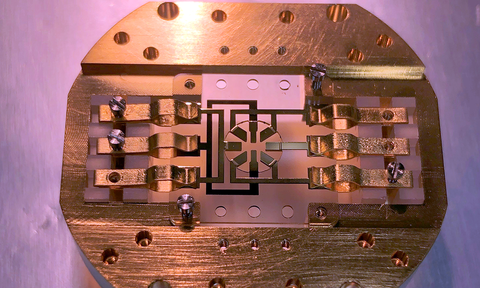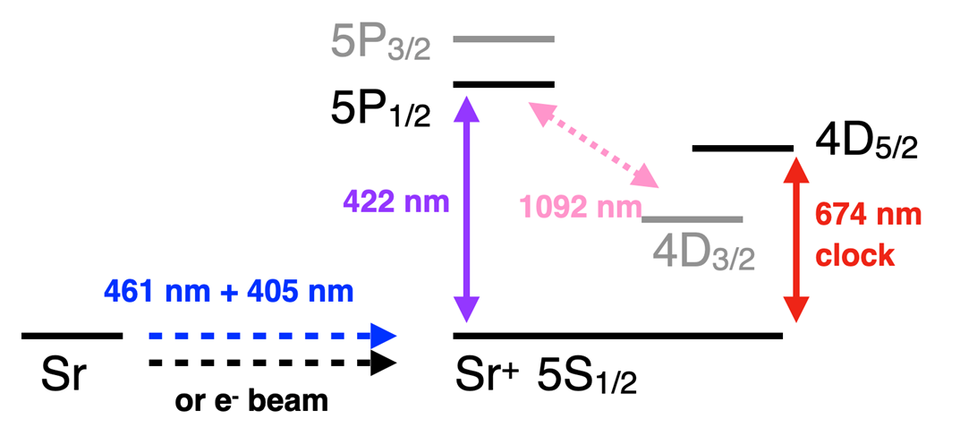Summary
NIST is constructing a high-uptime optical frequency reference based on a single trapped Sr+ ion. The goal of this project is to provide long-term ≤1x10-16 frequency accuracy to the timescale’s maser ensemble. In order to accurately track maser frequency drift, optical frequency measurements should be made several times per week in perpetuity. Quasi-continuous operation could reduce the typical time deviation of UTC(NIST) to near or below the intercontinental-time-transfer noise-floor of a few hundred ps per month.
Description

Picture of the trap assembly.
The single 88Sr+ clock is attractive for both its frequency accuracy and for its relative simplicity. The 674 nm clock transition has been independently studied at several NMI’s at the 10-17 level [1-4]. Advances in light source technology [5,6] may allow operation with just two lasers: one for state preparation and one for clock spectroscopy. Whenever possible experimental design favors redundancy, simplicity, and manufacturability [7] for (quasi-)autonomous operation. This project will provide a technological bridge between continuously operated microwave fountain frequency references and lower-uptime experimental optical frequency references.

References
[1] A. A. Madej et al. Phys. Rev. Lett. 109, 203002 (2012)
[2] G. P. Barwood et al. Phys. Rev. A 89, 050501(R) (2014)
[3] P. Dubé et al. Phys. Rev. A 87, 023806 (2017)
[4] P. Dubé et al., PRL, 112, 173002 (2014)
[5] T. Fordell et al. Optics Letters, 40, 1822-1825 (2015)
[6] T. Fordell et al. JOSA B, 36, 415-4250 (2019)
[7] D. R. Leibrandt et al. US Patent App. 17/590,690

